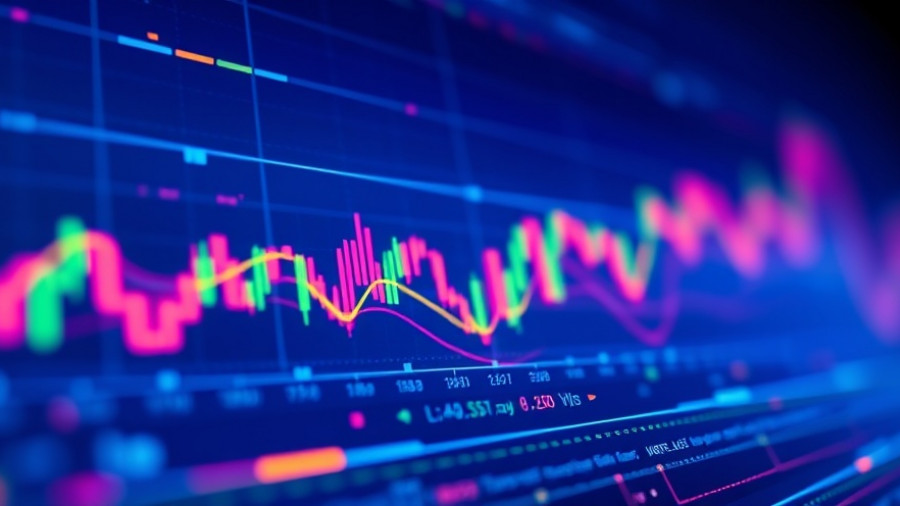
The AI Bubble and the 1800s Railroad Mania: A Deep Dive
As technology accelerates, the landscape of investment continues to evolve dramatically. Edward Dowd’s recent analysis of parallels between today’s artificial intelligence (AI) bubble and the 1800s railroad bubble presents a captivating study of how investment climates can mirror past trends. Dowd highlights three key characteristics shared by both phenomena: speculative investment, transformative technology, and the cyclical nature of economies.
Understanding Speculative Investment Trends
Much like the railroad bubble, which attracted massive investments due to perceived innovation potential, the AI sector is currently experiencing a similar surge in speculative interest. Investors today are racing to capitalize on breakthroughs in machine learning, neural networks, and automation, often with inflated valuations and profit expectations—mirroring the 19th-century craze over railroads that promised to link towns and streamline freight movement.
Dowd’s reference to Grok’s insights indicates that just as railroads became overbuilt in the 1870s following speculative investments, the AI market may soon face a reality check. Companies like Nvidia have seen phenomenal stock price increases, raising questions about whether current valuations are sustainable or indicative of an impending correction.
Lessons from History: The Inevitable Economic Cycle
The historical reference is crucial here—each bubble is followed by a market correction, sharply reflecting the law of economics. Investors today must learn from the railroad era's trajectory, where initial euphoria turned into significant losses. Dowd points out that inflated price-to-earnings (P/E) ratios are reminiscent of the financial practices leading up to the railroad bubble's burst, indicating a brittle foundation on which the current AI investments rest.
Today, with AI-driven stocks climbing to all-time highs, the echoes of past economic patterns warn investors to maintain caution. Support levels, such as Nvidia’s $100 mark, should be watched closely, as they may serve as indicators for strategic investment moves.
Transformative Technologies: A Double-Edged Sword
Both the railway system of the 19th century and AI today are underscored by their transformative nature, poised to redefine industries and daily life. Railroads revolutionized transportation, and AI promises to do the same across sectors like healthcare, finance, and beyond. Yet the excitement surrounding these advancements often overshadows practical considerations.
In Dowd's analysis, it’s clear that while AI holds immense potential for societal benefits, it also presents risks. The resemblance to railway projects which failed to deliver on grand promises is alarming. Today’s investors are urged to evaluate the realities of AI’s impact rather than succumbing to the allure of trendy stocks. Companies developing AI technologies must focus on sustainable growth and practical applications if they are to survive potential market corrections.
Opportunities in AI-Driven Trading Strategies
The interconnectedness of AI technologies with cryptocurrency markets opens a new arena for traders, further paralleling the excitement seen in the railroad mania. Dowd underscores the spikes in trading volumes for AI-related cryptocurrencies like Fetch.ai and Render as direct responses to market news. These fluctuations reflect the speculative trends driven by broader AI enthusiasm.
For crypto investors, understanding these patterns can provide strategic trading opportunities, especially in identifying potential dips for buying. Historical data shows that significant corrections in speculative markets can create lucrative long-term holding opportunities.
What Investors Should Consider Moving Forward
The key takeaway from Dowd’s exploration is the importance of prudence in investment decisions. The parallels drawn suggest that investors should be equipped not just with enthusiasm for cutting-edge technology but also with an understanding of market psychology and the historical lessons from previous economic bubbles.
Investors today should observe support levels and remain vigilant about signs of overvaluation as AI stocks navigate the volatile landscape. Moreover, adopting a grounded approach similar to analyzing railroad era investments may help safeguard assets in the wake of potential adjustments.
As we observe the AI bubble's development, it poses vital questions for both short and long-term investment strategies. Investors should not only track AI advancements but also evaluate their market implications holistically, drawing on historical economic contexts to navigate uncertainties in this dynamic field.
In conclusion, by leveraging the insights from both the railroad and AI bubbles, traders can arrive at a more nuanced understanding of current investment opportunities and risks. This historical lens fosters a rich field for deeper engagement with evolving technological landscapes and financial paradigms.
 Add Row
Add Row  Add
Add 




Write A Comment